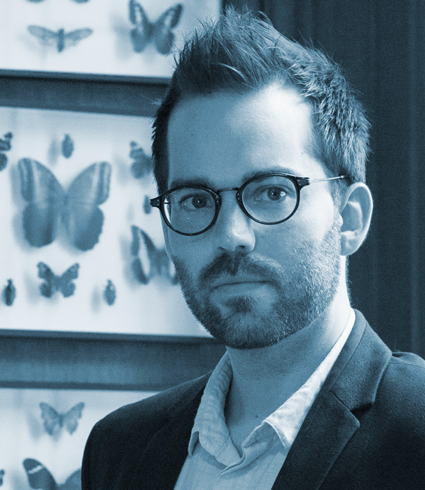
Graves Guillian
Designer, (design and sciences, biodesign, bio-inspiration, eco-innovation, sustainability). Founder and CEO of the agency Big Bang Project. Teacher at ENSCI-Les Ateliers and co-founder and co-director of the Masters programme Nature-Inspired Design. Teacher at the École du Management de l’Innovation at Sciences Po, Paris.
Research
Today, amid the contemporary quest for new models and new resources to be used to design future societies, biology appears as the perfect candidate. Throughout a 3.8 million-year history, the living world has constantly experimented, developing strategies and mechanisms adapted to an environment in perpetual transformation, bound by multiple constraints. The living world has therefore proved itself to be both a model of sustainability and inventiveness, from which industries and other players seeking sustainable innovations are beginning to draw inspiration. It has shown itself to be a mature technology with which it is possible to collaborate.
Living things have always been both a model and a resource for mankind. The flight of birds inspired us to design the first flying machines, cows have fed us with their milk and clothed us in their leather, and bacteria and yeast have enabled us to make cheeses and beverages. As Leonardo da Vinci once said, ‘Take your lessons from nature, that's where our future lies’. Today, our growing understanding of biological systems combined with technical and technological advances points towards the emergence of a new industrial revolution based on Life as a source of inspiration (bio-inspiration and biomimicry), as a material (bio-sourced or bio-manufactured materials) or as a process (bio-processes, biotechnology, bio-assistance).
Provided that we have the methods and tools that enable us to move forward in the complexity of knowledge linked to living organisms, it is now possible to work with the immense diversity of solutions developed by living organisms. This allows us, through design and science, to imagine different answers to the major challenges of tomorrow, which will span numerous fields of application, such as energy, materials, health, sport, food, housing, mobility and even space.
Biography
Guillian Graves is a designer, he graduated from the École Nationale Supérieure de Création Industrielle (ENSCI-Les Ateliers, accréditée par la Conférence des Grandes Écoles) in partnership with the École Polytechnique Fédérale de Lausanne (EPFL). He is the founding director of the Big Bang Project, an agency with the aim of developing innovative solutions to the major challenges of today and tomorrow through the science of design. He is also a teacher and the co-founder and co-director of the Masters programme Nature-Inspired Design at the ’École Nationale Supérieure de Création Industrielle (ENSCI-Les Ateliers). He is a member of the Centre de Recherche en Design (ENSCI-Les Ateliers & École Normale Supérieure Paris Saclay), and teacher and lecturer at the École du Management de l’Innovation at Sciences Po.
Passionate about biology from the earliest age, Guillian Graves draws on a decade of experience in the natural sciences in order to come up with more sustainable innovations thanks to biomimicry and bio-inspiration. His work is structured around three main notions of research, innovation, and education.
- Research in order to produce new knowledge and develop new methods, new tools and new know-how so as to put natural sciences and technologies in the service of society.
- Innovation in order to imagine, experiment, conceive of, prototype and develop new visions and new bio-inspired artefacts, materials, products, services, experiences and spaces in response to the major challenges of the environment, the climate, and society in the present and in the future.
- Education in order to transmit a vision, expertise, and a transdisciplinary tool box that covers biomimicry and bio-inspiration within enterprise, research centres, places of higher education, and training, via various media, teaching formats, conferences, publications, workshops, and exhibitions.
Innovative in both their approach that breaks with the traditional practice of design and engineering in sciences, as well as in their results, Guillian Graves’ projects have been presented in over 100 conferences in Europe, the United States and in the Middle East. His work has also been exhibited in 17 countries and 6 different countries, from the MAK museum in Vienna, Austria, to New York Design week, as well as at the Centre Pompidou in Paris. Moreover, his projects are often cited as major reference points in the international press and in specialised texts. His work has been covered by Wired Magazine, Stuff Magazine, Usbek & Rica, Frame, Le Monde, as well as in publications including Les Ruptures Fertiles - Design et innovation disruptive et 75 designers pour un monde durable. His work has also been featured in documentaries on television and on the radio, including the documentary Rêver le Futur et Objectif 2050 diffusés sur Planète+ and the documentary series Nature=Futur ! Series 1 and series 2.



